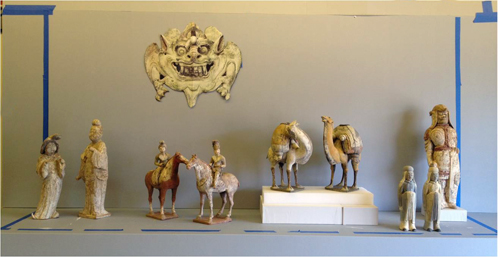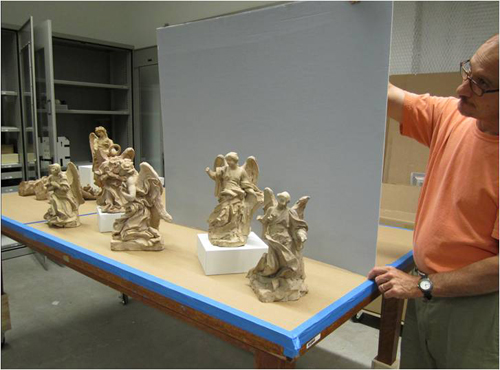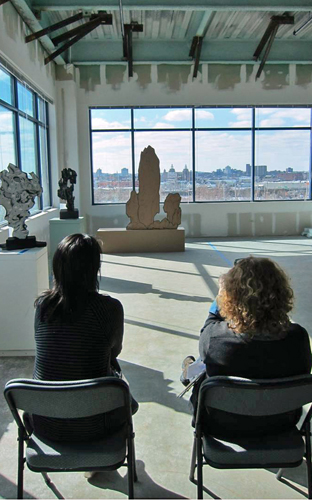While floor plans, miniature models, and computer renderings are helpful visualization tools for planning a space that is still under construction, there’s nothing better than working with the objects themselves. For the Harvard Art Museums’ Division of Asian and Mediterranean Art, a group whose collection is largely comprised of three-dimensional objects, display case mock-ups have been a key tool in their installation planning.
To use the display case mock-ups, curators pull objects from art storage (paper cut-outs stand in the place of unavailable objects) and arrange them in a “universal” case fabricated by our Collections Management team. Curators mark out with blue tape the exact dimensions of a particular case they are planning, and temporary mounts are fashioned for the pieces. They get as close as they can to replicating the exact arrangement in their plans, but occasionally there is a bit of improvisation (for example, using the hands of fellow staff as temporary mounts).
It is during these design sessions that curators get a real grasp of how the objects interact with each other and their containing space. Sometimes arrangements are more cluttered than they appeared on paper or an object might be better suited mounted on the backboard rather than placed on a display block.
Mock-ups have also gone beyond the scale of cases. One of the features of our new facility will be the winter gardens—glass-encased gallery spaces on each side of the building that feature larger pieces of sculpture (think of it as a super-sized display case). When the Division of Asian and Mediterranean Art worked on the plan for their winter garden, they used a space with large bright windows in our off-site facility in Somerville to plan an arrangement of Chinese garden rocks. Though seeing the ideas on paper helped, it was not until life-sized facsimiles were placed in the actual space that a critical decision could be made about how to display them.
Curators eagerly await the day they can step into the finished galleries. In the meantime, they are using the tools at hand to make their way toward a final installation plan, one case at a time.





